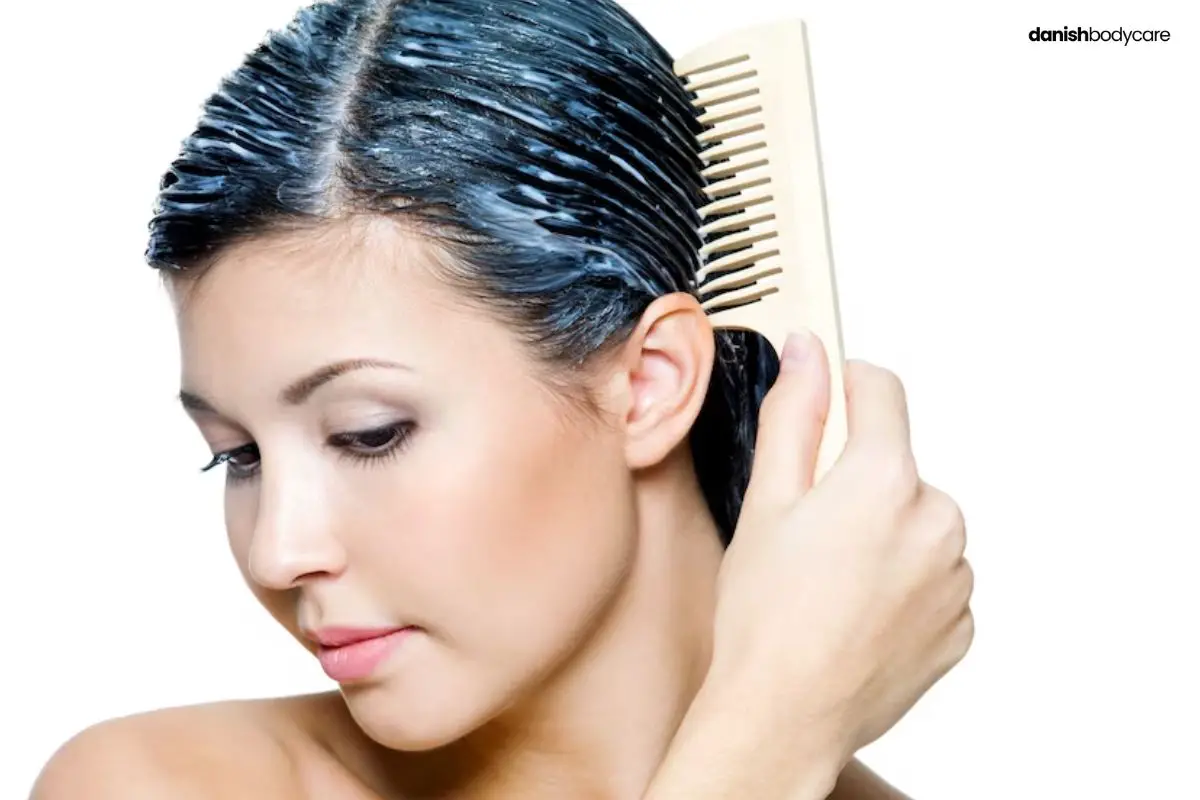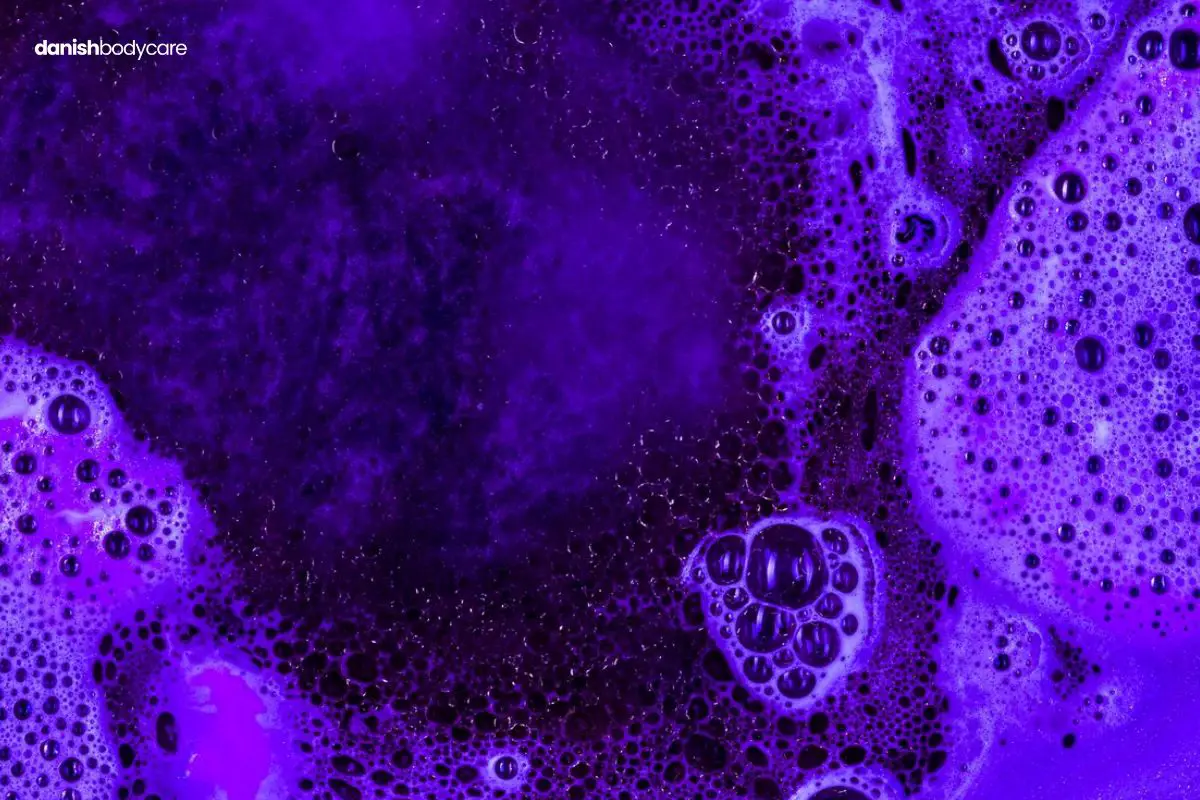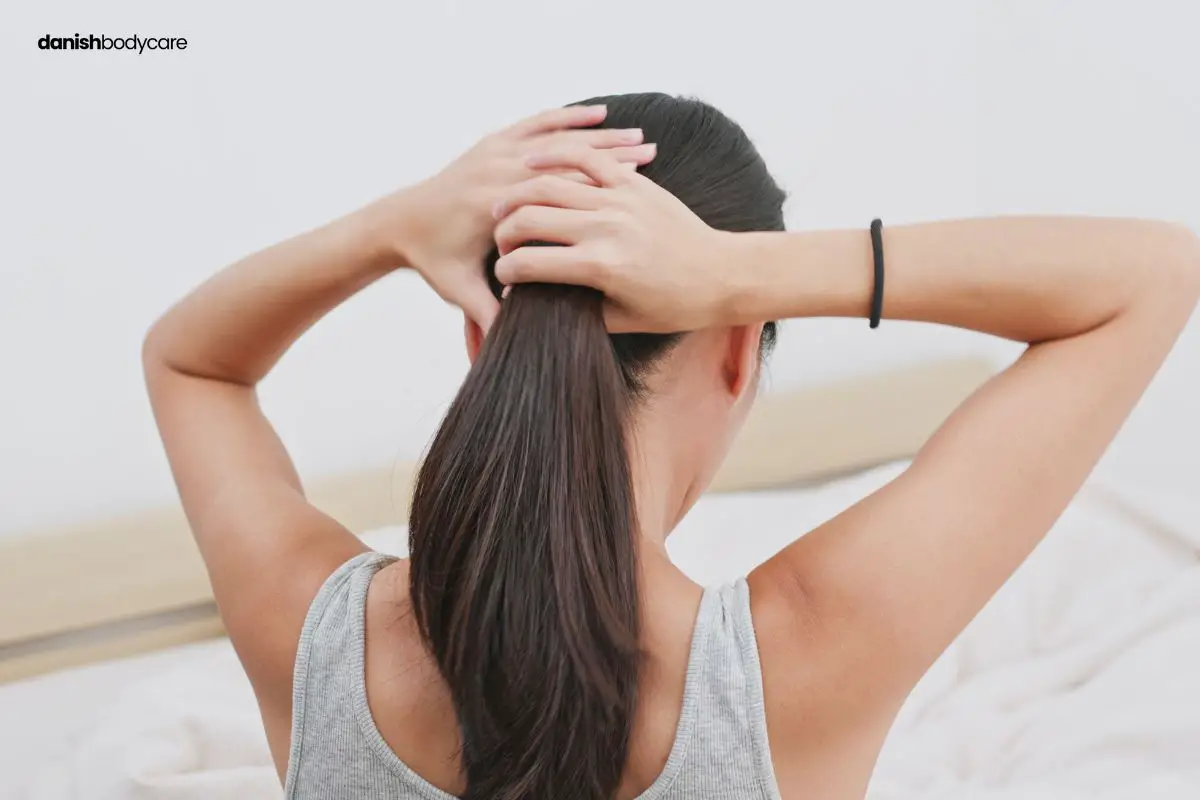Itchy scalp after bleaching hair is a common concern many face. Bleaching, while popular, can lead to various side effects.
One fact stands out: chemicals in bleach can strip the scalp of its natural oils.
This often results in an uncomfortable itch. This article dives into why this happens and how to find relief.
The Hair Bleaching Process
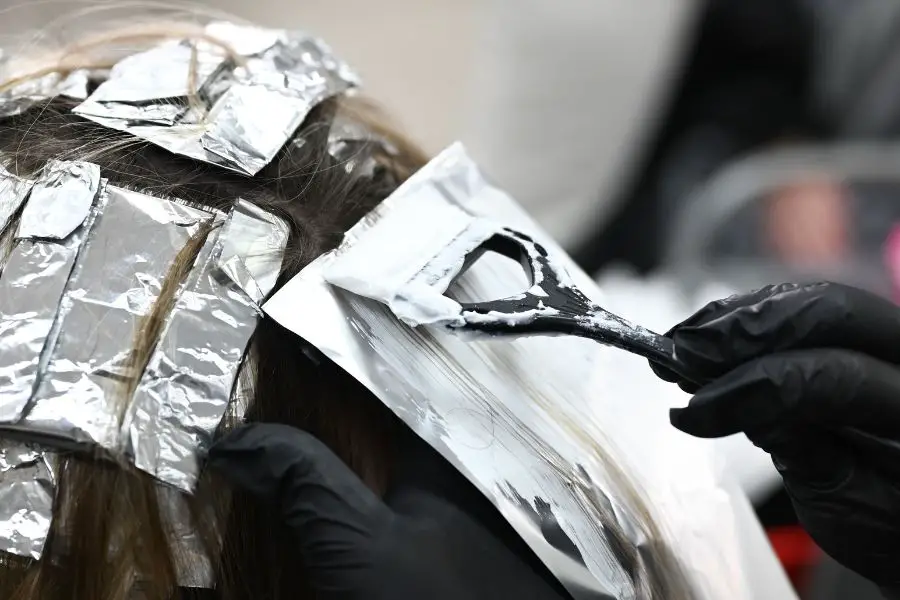
The hair bleaching process is a chemical treatment that lightens your hair color. It does this by breaking down melanin, the pigment that gives your hair its natural color.
During this process, the bleach reacts with the keratin, a protein in your hair. This causes your hair to look lighter. Sometimes you might need to bleach your hair multiple times to get the desired shade.
This chemical reaction might lead to some damage to both your hair and scalp.
Chemicals Involved in Hair Bleach and Their Effect
Hair bleach contains different chemicals that work together to achieve the desired hair color. These chemicals can be responsible for your itchy scalp after bleaching. Here’s a brief overview of their effects:
| Chemical/Ingredient | Role | Effect |
|---|---|---|
| Hydrogen Peroxide (H2O2) | Main active ingredient that works as an oxidizing agent to break down melanin and lighten hair. | Opens hair’s cuticle layer; can cause hair dryness, brittleness, scalp irritation, and chemical burns in higher concentrations. |
| Ammonium Hydroxide (NH4OH) | Acts as an alkaline agent to open up the hair cuticle and facilitate the penetration of hydrogen peroxide. | Raises hair’s pH; can lead to hair dryness and scalp irritation. |
| Persulfates (Ammonium, Potassium, or Sodium Persulfate) | Lightening boosters or accelerators increasing the bleaching process’s efficiency. | Boosts lightening power; can cause skin irritation, allergic reactions, and respiratory issues if inhaled. |
| pH Adjusters (Citric Acid, Phosphoric Acid) | Control the pH level of the bleaching mixture to ensure its effectiveness. | Ensures optimal pH for bleaching; excessive acid can cause scalp irritation. |
| Conditioning Agents (Oils, Silicones) | Added to protect hair and mitigate the harsh effects of bleach. | Provides protection and moisture during bleaching; helps reduce hair damage. |
| Stabilizers and Thickeners | Maintain the consistency and stability of the bleaching product. | Ensures even application and stability; generally no direct impact on hair’s structure or color. |
What Is The Impact of Bleaching on the Scalp?

Bleaching your hair can sometimes cause scalp irritation and itchiness. This reaction occurs when the chemical ingredients in the bleach interact with your scalp. The interaction can often cause discomfort.
In some cases, this can also lead to a condition called scalp psoriasis. Psoriasis causes redness, flaking, and inflammation of the scalp.
On-scalp bleaching may lead to more severe issues, such as chemical burns or an allergic response. This happens if not done the right way. These complications can cause hair loss, scabbing, and peeling.
To reduce the risk, always follow the instructions and avoid prolonged exposure to bleach.
Why Does My Scalp Itch After Bleaching and Dying Hair?
The causes behind an itchy scalp after bleaching can be dangerous and include:
- Chemicals and their reactions
- Stripping of natural oils
- Allergic reactions
- pH imbalances
- Skin conditions
- Incorrect application
Chemicals and Their Reactions
Bleaching and dying hair involve using harsh chemicals. These chemicals can cause a chemical burn on your scalp, leading to itching and discomfort.
Some scalp burns might be superficial, while others can be harsh and need medical attention.
Stripping of Natural Oils
Hair treatments like bleaching tend to strip your scalp of its natural oils, causing it to become dry and irritated.
This dryness can lead to itching and the worsening of pre-existing skin conditions like eczema or psoriasis.
Allergic Reactions
It is possible to have an allergic reaction to the ingredients in hair dyes, which can cause an itchy scalp.
This condition, known as contact dermatitis, occurs when your skin has an adverse reaction to a specific substance.
Always do a patch test before applying hair dye to your entire head to avoid this issue.
pH Imbalances
Hair dyes and bleaches can disrupt the natural pH balance of your scalp.
A pH imbalance can make your scalp prone to various skin conditions. These include seborrheic dermatitis or atopic dermatitis, which lead to itching and inflammation.
Skin Conditions
If you already have a pre-existing skin condition, using hair dyes or bleaches might exacerbate the problem. These conditions include:
- Psoriasis
- Eczema
- Seborrheic dermatitis
Incorrect Application
Applying bleach or dye in an incorrect manner can also cause your scalp to itch.
If you leave the product on for too long or apply it too close to your skin, it can cause severe irritation.
Symptoms to Watch Out For
To make sure you identify your problem correctly, watch out for these symptoms:
- Redness
- Swelling
- Pus or oozing
- Intense itching or burning
- Dry, flaky skin or dandruff
Redness
After bleaching your hair, you might notice redness on your scalp. This can be a sign of irritation caused by the bleach.
Keep an eye on the redness, and if it gets worse, it might be a good idea to consult a healthcare professional.
Swelling
Swelling can occur if your scalp has a severe reaction to the bleach. Track the swelling and seek medical advice if it becomes too painful or doesn’t improve.
Pus or Oozing
It’s not normal for your scalp to produce pus or oozing after bleaching.
If you see this, it could be a sign of infection or a severe reaction. Reach out to a healthcare professional for guidance.
Intense Itching or Burning
A little itching might be normal, but if you experience intense itching or burning on your scalp, it might mean that there’s a problem.
Chemical burns from bleach can cause these symptoms, along with potential hair loss, scabbing, and peeling.
Dry, Flaky Skin or Dandruff
You can expect dryness and flakiness after bleaching. If it becomes excessive, it might show that your scalp isn’t coping well with the treatment.
Rinse your hair to remove all shampoo, as leftover product can contribute to irritation.
How Do You Stop Itching After Bleaching?
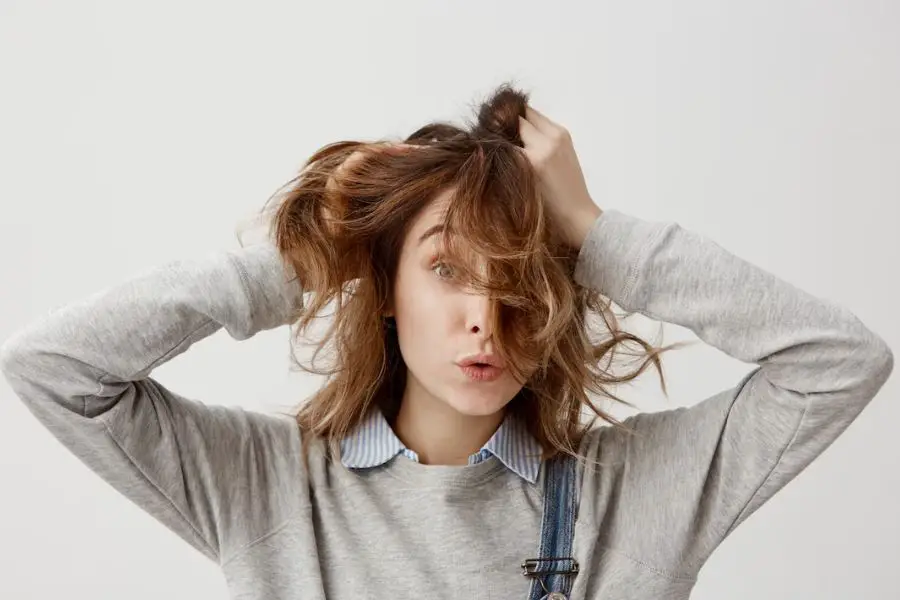
To stop itching after bleaching your hair, you can:
- Rinse your scalp under cold water
- Avoid scratching and apply a cool compress
- Use natural oils
- Apply over-the-counter hydrocortisone creams for inflammation
- Use aloe vera gel for cooling and soothing effects
- Try anti-dandruff shampoos designed for sensitive scalps
- Consult a dermatologist or trichologist for persistent symptoms
Rinse, Avoid Scratching, and Apply a Cool Compress
Rinse the affected area of your scalp under cold running water for 8 to 10 minutes to soothe irritation.
Avoid scratching, as it can worsen the itchiness and cause infection. Instead, try applying a cool compress on the itchy area for extra relief.
Natural Oils
Moisture plays a crucial role in maintaining the health of your scalp and hair. After bleaching, your scalp may feel dry, resulting in itchiness.
Consider applying natural oils like coconut oil and olive oil to replenish moisture and soothe your irritated scalp.
These oils contain nourishing fatty acids and proteins that help promote hair health and provide sun protection.
Over-the-counter Hydrocortisone Creams for Inflammation
Topical over-the-counter hydrocortisone creams reduce inflammation and itchiness caused by scalp irritation. Follow the cream’s instructions and apply a thin layer on the affected areas of your scalp.
Prolonged use of hydrocortisone creams may cause side effects, so consult your doctor if symptoms persist.
Aloe Vera Gel for Cooling and Soothing Effects
Aloe vera gel is a natural remedy known for its cooling and soothing effects. It helps reduce scalp irritation and itchiness caused by bleaching.
Apply a generous amount of aloe vera gel to your scalp and massage it. Wait for a few minutes before rinsing it off with cold water.
Anti-Dandruff Shampoos Designed for Sensitive Scalps
If you experience dandruff or dryness after bleaching your hair, use shampoos for sensitive scalps. These shampoos provide relief by:
- Removing excess oil
- Dead skin cells
- Dandruff-causing yeast
Look for shampoos with ingredients that help combat dandruff and soothe scalp itchiness:
- Zinc pyrithione
- Selenium sulfide
- Ketoconazole,
Consultation With a Dermatologist
It’s important to seek professional care when experiencing:
- Severe itchiness
- Burning
- Pain on your scalp
Consulting with a dermatologist can provide you with the right treatment. They make recommendations based on their expert knowledge and experience.
A dermatologist will:
- Assess your scalp condition
- Identify the cause
- Help reduce your symptoms.
They can offer solutions such as specialized shampoos, creams, or medications to address the issue.
Preventing Itchy Scalp from Bleaching

To prevent an itchy scalp after you bleach your hair, consider these strategies:
- Performing a patch test
- Propper application method
- Use of protective gear
Performing a Patch Test
Before you bleach your hair, it’s essential to perform a patch test. This simple step can help you determine if you’re allergic or sensitive to the bleaching product.
Apply a small amount of the bleach mixture on the inside of your elbow or behind your ear, then wait for 48 hours.
If you don’t experience any irritation, you can proceed with the bleaching process.
If you notice itching or redness, look for an alternative product or consult a professional.
Proper Application Method
For better results and to cut the risk of scalp irritation, follow the directions on the bleaching product.
Apply the bleach mixture to the mid-lengths of your hair, leaving at least one inch away from the scalp.
Work your way towards the ends, then apply it near the roots and scalp during the final stages.
This method ensures the bleach has less contact with your scalp and thus reduces the likelihood of itchiness.
Use of Protective Gear
Wearing gloves during the bleaching process prevents accidental contact with the scalp.
When you wear gloves, you have better control over the application. This way, you avoid spreading the bleach beyond your hair strands.
Use non-latex gloves if you have a latex allergy.
Frequently Asked Questions
How long will my scalp be irritated after bleaching?
The duration of scalp irritation after bleaching can vary from person to person. The itching and discomfort should subside within a few hours to a couple of days. If you’re experiencing severe or persistent discomfort, consult a medical professional.
Is itching normal when bleaching hair?
Yes, some itching and discomfort are normal when bleaching hair. This is because the bleaching process involves a chemical reaction between the bleach and the melanin in your hair. This results in a lightening effect. The reaction can cause a mild sensation on your scalp, often experienced as itching. Seek immediate medical attention for severe reactions.
Why am I all of a sudden allergic to hair bleach?
It’s possible to develop an allergy to hair bleach or its ingredients regardless of previous uses. Allergic reactions can develop over time and may manifest in the form of redness, itching, inflammation, or even blisters on the scalp. To determine if you’re dealing with an allergic reaction, consult with a medical professional. Self-diagnosis can often be misleading.




